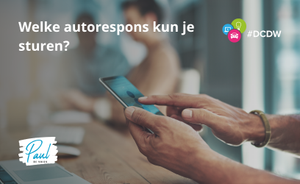
What autoresponder can you send?
10 juli 2025, PaulRecently, I wrote about the thank-you pages on various websites. But when you say thank-you page, you also say autoresponder. In other words: what email do you send to the customer after they’ve submitted a request on your website? At Ligier Store Doesburg, we send the following message:
Hi Paul,
Thanks for your interest in our microcars and city cars!
We’ll be in touch soon via phone, WhatsApp, or email to provide more information and schedule an appointment. Have you already received a WhatsApp message from us? That’s the fastest way to reach us and ask any questions.
Whether you’re looking to buy, lease, or get a subscription: we make it simple and transparent, with personal attention tailored to your needs. An appointment can take place in Doesburg, online via FaceTime, or even at your location.
We look forward to helping you further!
Kind regards,
Team Ligier Store Doesburg
Simple
It’s a fairly simple message in which we use the information we’ve received – the first name. We also explain what the customer can expect from us and what we’re aiming for: a WhatsApp conversation.
We send this initial reply as a plain-text email – no HTML, logos, links, or anything like that. The goal is to ensure the message reaches the inbox and doesn’t end up in spam. A nicely designed message might look appealing, but what if it’s flagged as advertising? Is such a message still effective then?
We also send an SMS and a WhatsApp message.
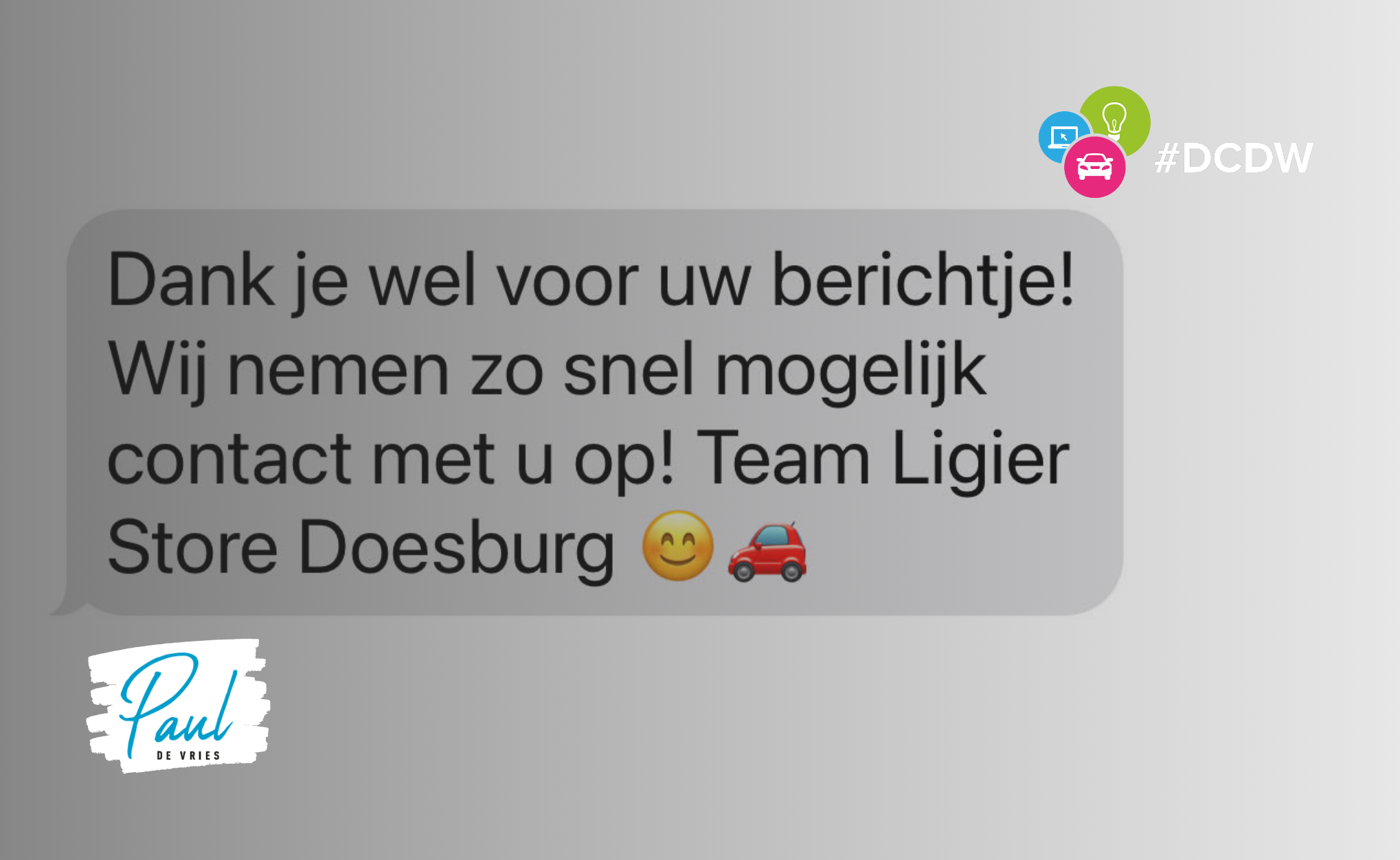
Test Pool
Looking at our test pool of the biggest dealerships in the Netherlands, creativity is lacking. The autoresponder is not seen as the start of a dialogue from the dealership, but simply as a confirmation of the customer’s own input. Misused, because the customer already knows their own details.
And such a confirmation email isn’t exactly a “wow” moment.
The first example we saw only confirms the car the customer responded to. No mention of their name or what they can expect next.
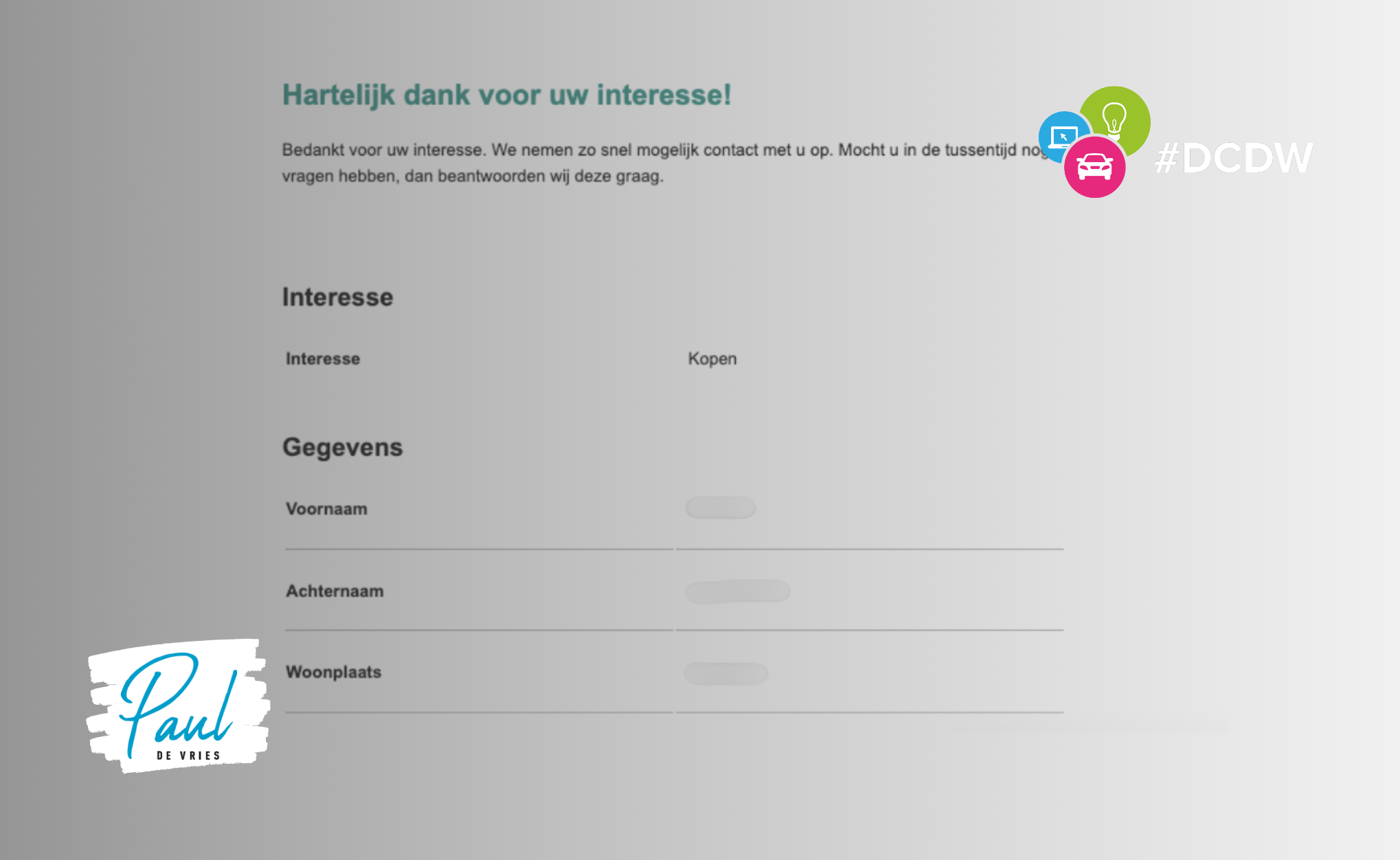
The second example is even weaker: not personal, not informative, and without a clear goal.
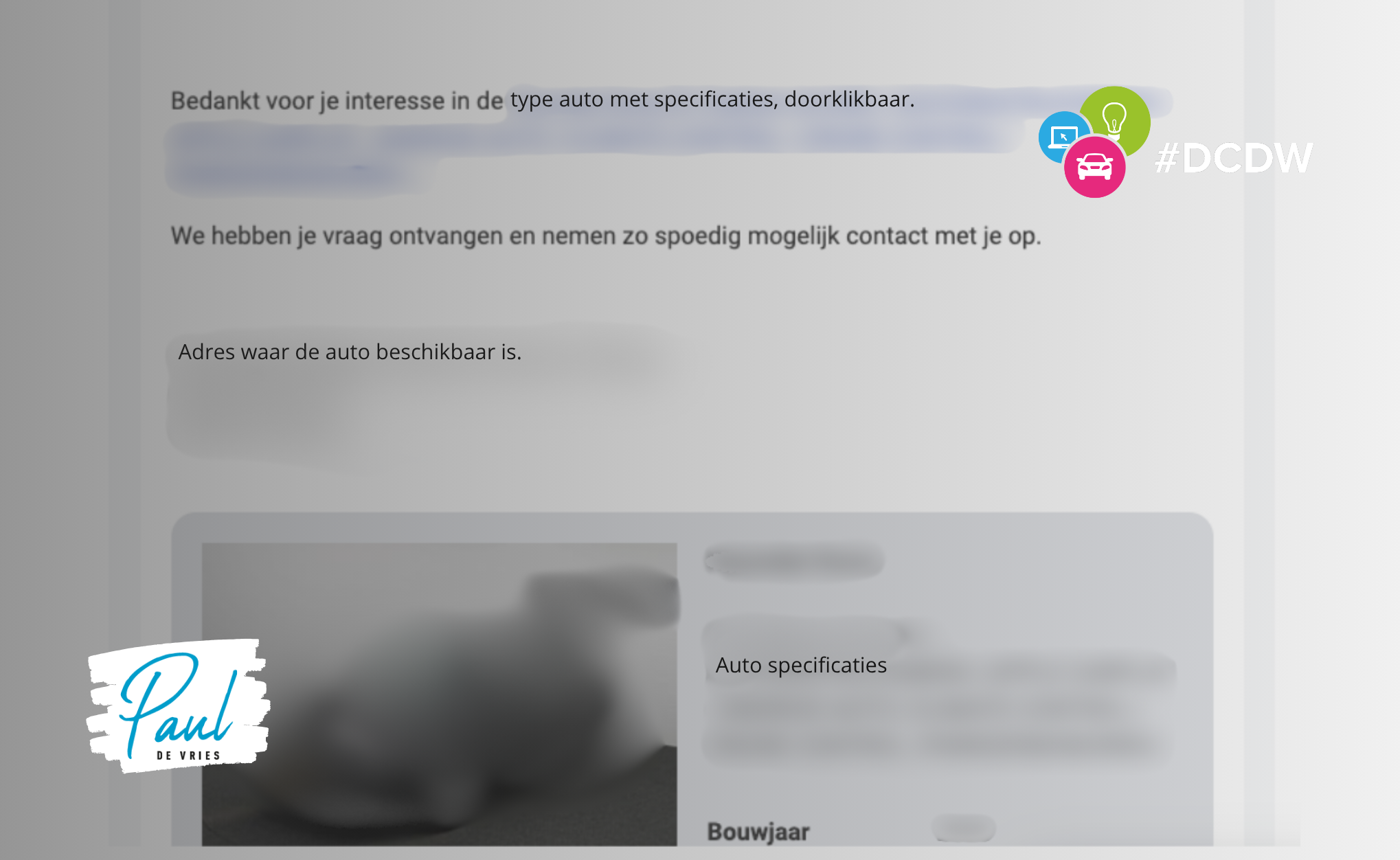
The next one is actually quite nice! Okay, maybe too much HTML, logos, and colors – which might lower the deliverability – but the message itself is one of the better ones.
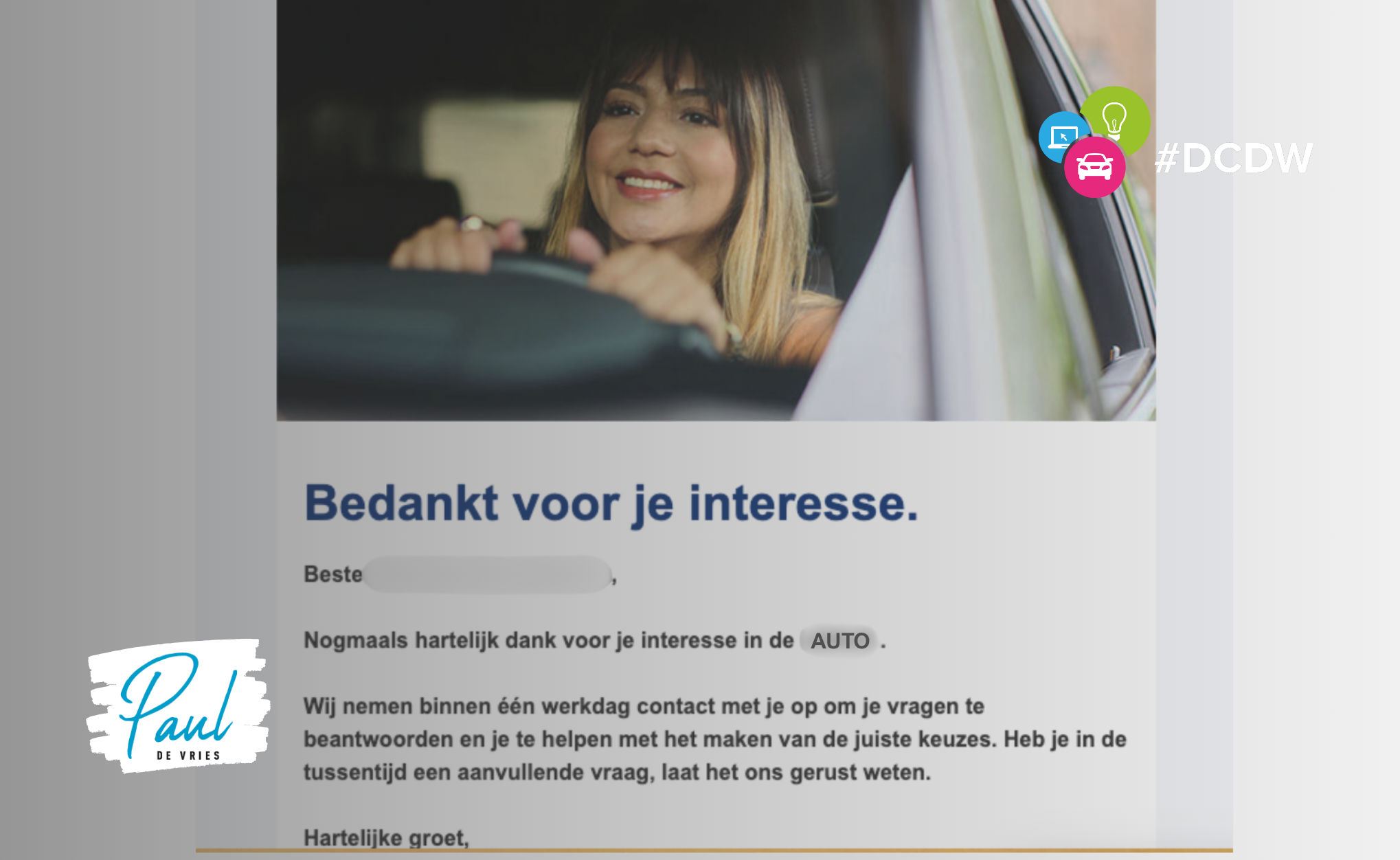
And what the next steps are for the customer is shown in another example – also a bit better! (Less bad…)
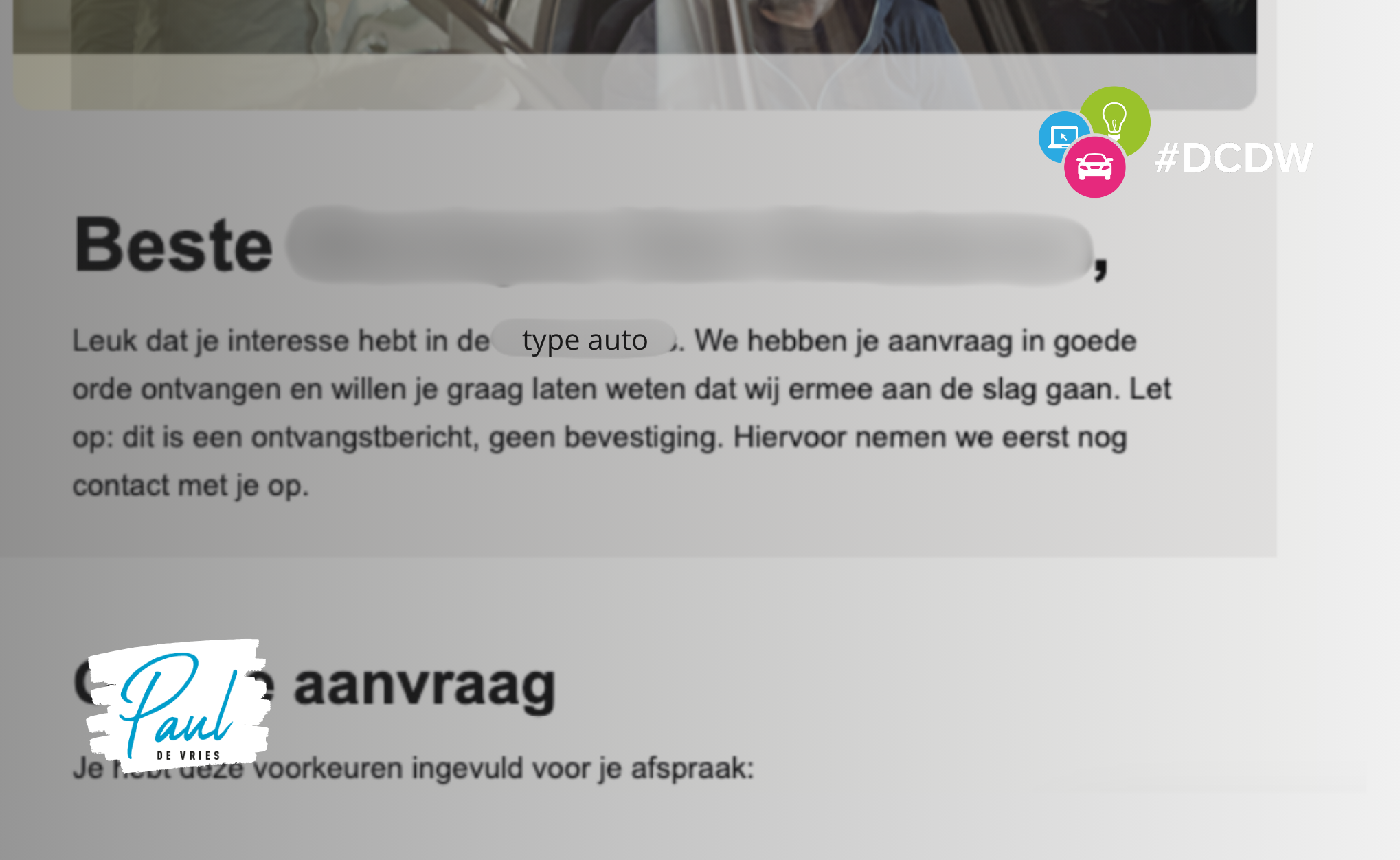
And lastly, I want to show this one:
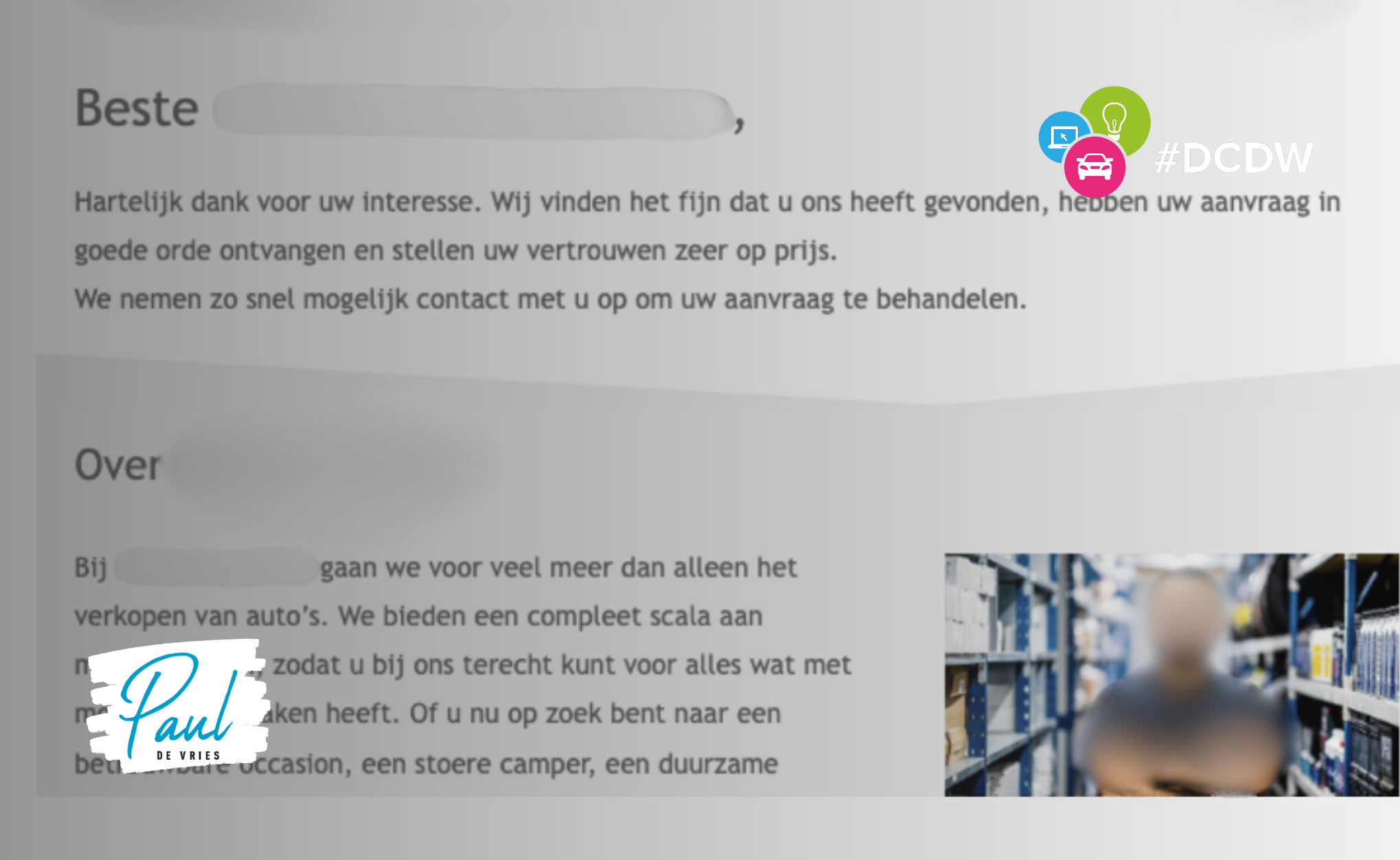
It contains information about the request and explains what the customer can expect – although “as soon as possible” is of course vague. The positive thing is they explain what kind of company they are, and they do so in a nice and engaging way!
All in all the autoresponder as a first email could definitely be more exciting!
Why not send it on behalf of the owner, explaining what the customer can expect?
Why not make the message more enthusiastic, showing that you’re happy about the request?
All valid points – but we have to actually put them into action!
Oh, and by the way – all the requests shown were sent by our colleague Monique van Kesteren as a test. Can you guess how often these requests were followed up? Except for one dealership, none sent more than two emails. So after the autoresponder, there was one message from the salesperson, and then nothing. Online sales is hard work. You have to follow the process until you’ve made contact. The buyer has already shown they want to buy from you. How do you prove that you’re the one who wants to sell?




